My appetite has decreased considerably since my chemo treatment started the second time around.
5. What I’m Currently Able to Eat & Drink
- 1. My Most Recent Scare
- 2. Chemo Prep The Second Time
- 3. Chemotherapy The Second Time Begins…
- 4. Chemo Side Effect The Second Time
- 5. What I’m Currently Eating
- 6. Port-a-Cath My Saving Grace
- 7. My Lockdown Support Team
- 8. ENT Surgery & Prep
- 9. Chemotherapy The Third Time Begins…
- 10. Chemo Side-Effects & Changes, The Third Time.
- 11. Journey Towards A New Recovery
I wrote about foods to eat when having chemotherapy and Super Foods in general when I was first diagnosed with breast cancer over four years ago while having chemo. My diet has always been generally quite healthy, filled with lots of fresh foods and drinks.
My appetite: This has decreased considerably since my chemotherapy treatment started the second time around.
The loss of appetite has me choosing very carefully what to eat and drink to ensure that I’m retaining good nutrients which will enable my body to recover after each chemotherapy hit.
I’m currently on my sixth Paclitaxel and sixth antibodies. It’s now February and the difficulty with eating has increased greatly. I don’t get hungry and in general, nothing tastes good. I’m literally afraid to put food into my mouth just in case I throw up afterward.
I try to eat a little portion three times a day with plenty of fluids in between. I’m currently going all out in order to ensure I’m giving my body every chance of recovery food-wise.
I’m Currently Drinking:
I find drinking is so much easier than trying to eat but I refuse to blend all of my meals so I had to choose quite carefully what I put into my mouth trying to avoid the bitterness and the feeling of nausea.
Water – I’m happy to say that I had always consumed a lot of water even before I was made aware of all its benefits.
To function properly, all the cells and organs of the body need water. It lubricates the joints, It forms saliva and mucus, It delivers oxygen throughout the body, It boosts skin health and beauty, It cushions the brain, spinal cord, and other sensitive tissues, regulates body temperature, the digestive system depends on it, It flushes body waste, prevents kidney damage, It makes minerals and nutrients accessible. The list is endless on why you should drink water.

Coconut water – is an incredible drink and these are some facts on why I’m drinking a glass a day. Coconut water is lower in sugar than fruit juice, it contains electrolytes, it’s rich in manganese, the carbs in coconut water can help fuel workouts and recovery, it’s hydrating, facilitates digestion, can aid in getting that picture-perfect skin to mention a few of its benefits.
PS: I’m currently on cycle seven of my treatment and I can no longer drink this lovely and refreshing drink. I currently throw up every time I take a sip or even smell coconut water.
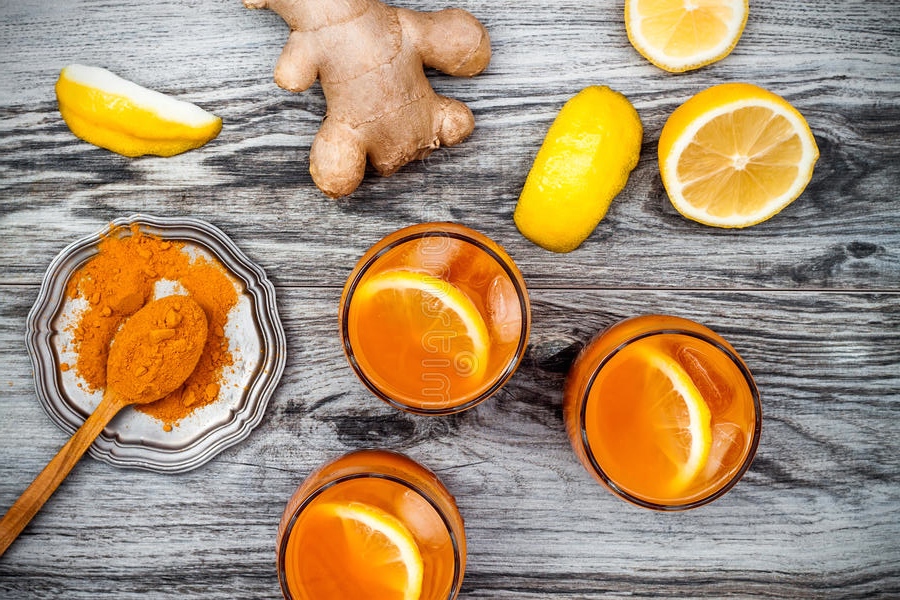
Before my first diagnosis of breast cancer, I drank first thing in the mornings about three times a week a drink made from organic turmeric powder, honey, fresh ginger and fresh lemon with hot water.
Chemotherapy this time around is giving me severe nausea even after taking the anti-sickness tabs and I accidentally discovered the first time of chemo that this drink really helps with my nausea. Now I drink this mixture almost every morning to enable a good advantage on my nausea.
Turmeric – is a potent nutritional supplement thanks to chemical compounds called curcuminoids, of which curcumin is the most beneficial. Curcumin is an anti-inflammatory agent (which means it’s helpful for arthritis, among many other conditions) and an antioxidant. Additionally, it helps the body absorb other antioxidants. And curcumin has been shown to benefit cancer patients because it inhibits the growth of almost all types of tumor cells.
Turmeric and lemon – Turmeric and lemon water is a detox drink, it may relieve arthritis symptoms, drinking turmeric and lemon can help protect you from infections, lower cholesterol levels and even help prevent Alzheimer’s disease and help keep you looking young.
Ginger – Fresh ginger contains several phytonutrients that may help to reduce inflammation and protect against cancer. Fresh ginger may also help to reduce nausea and vomiting whether due to treatment, motion sickness, or the flu.
Honey – Since ancient times, honey has been used as both a food and medicine. It’s very high in beneficial plant compounds and offers several health benefits. Honey is particularly healthy when used instead of refined sugar, which is 100% empty calories.
High-quality honey contains many important antioxidants. These include organic acids and phenolic compounds like flavonoids. Antioxidants have been linked to reduced risk of heart attacks, strokes, and some types of cancer. They may also promote eye health. Honey is a rich source of phenols and other antioxidant compounds. Many of these have been linked to a reduced risk of heart disease.
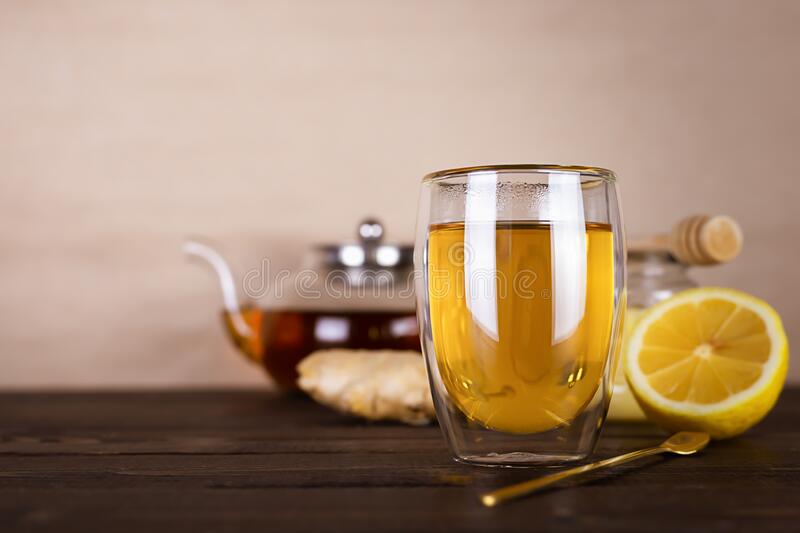
Green tea with lemon – After my first diagnosis, while researching what’s best to eat and drink during chemotherapy, I discovered that green tea was a great drink to get familiar with. These are some of my findings.
Tea contains healthy bioactive compounds, it may improve brain functions, it increases fat burning, contains antioxidants that may lower the risk of some cancers, may protect the brain from ageing, may reduce bad breath, may help prevent type 2 diabetes, and may help prevent cardiovascular disease.
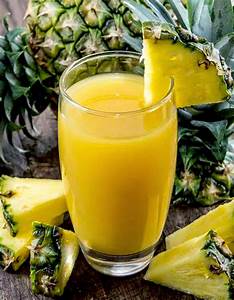
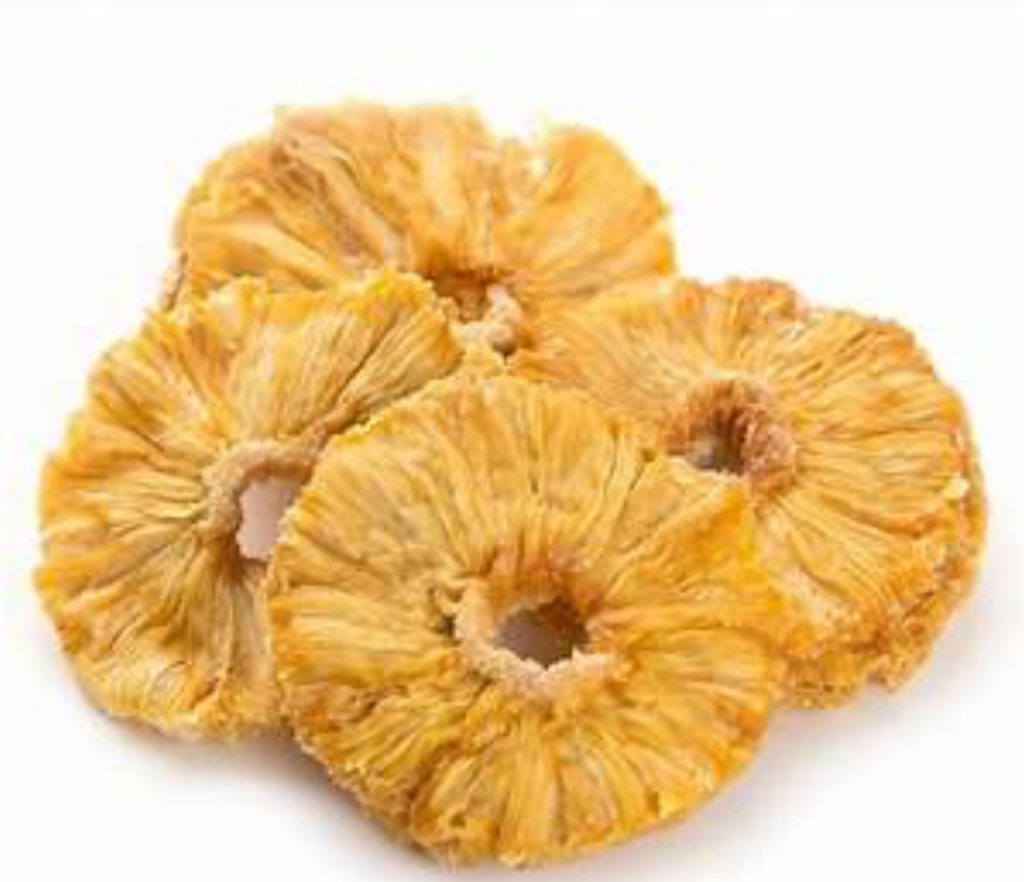
Pineapple Juice – My chemo nurse told me about drinking pineapple juice and eating the dried fruit during one of my chemotherapy sessions when I was first diagnosed over four years ago. She said one of her other chemo patients told her it helped with the acidic, metallic, and bitter taste chemo leaves you with.
While I’m not sure of the science behind this, I found that it worked then and it’s a bit of a hit and miss at the moment.
Here are some pineapple facts: Pineapple can offer protection from cancer by acting, literally, as a bolster. Vitamin C, Bromelain, flavonoids, and other antioxidants present in the fruit combat free radicals, but the hero that makes pineapple an anti-cancerous food is manganese. Manganese is the co-factor involved in the production of superoxide dismutase enzyme that helps to break down free radicals in the body. The high fibre content of pineapple is also said to lower the risk of colorectal cancer.
It’s also an immune booster and inflammation fighter, it helps to detoxify the body and mind, is incredibly great for vision, is a heart-healthy drink, regulates Blood Pressure, strengthens your gums, Promotes healthy digestion, treats ulcerative colitis, good for arthritic patients, reduces menstrual cramps, increases chances of conception, prevents signs of ageing to mention a few of its benefits as the list is endless.
PS: I’m currently on cycle seven of my treatment, it’s the end of February 2021 and I can no longer drink pineapple juice. It literally tastes bitter and sends me to the bathroom.
Eating Dried Pineapple – Dried pineapple is rich in dietary fibre in the form of insoluble fibre. This type of fibre supports the digestive tract to make sure things run smoothly. Insoluble fibre also provides a sense of fullness, so dried pineapple slices are a great option to satisfy hunger between meals.
Currently Able To Eat:
Taste is something I’m difficult with as a lot of my normal healthy consumptions now leave me with a bitter after taste, the feeling of nausea or actually throwing up.
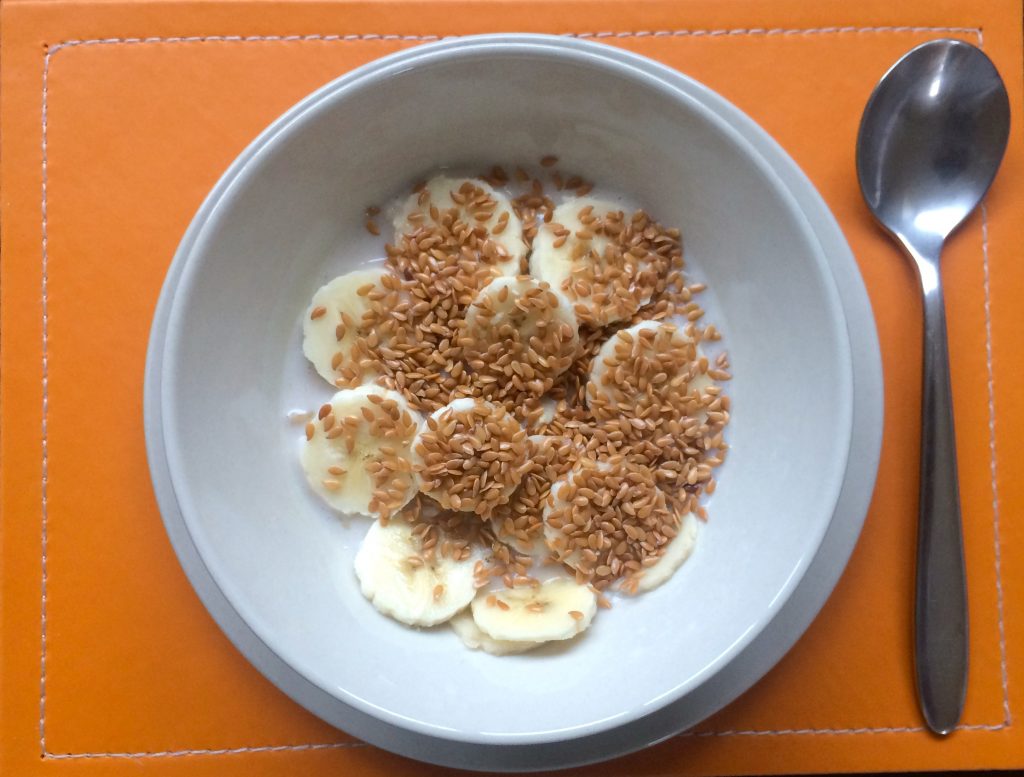
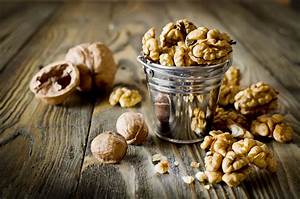
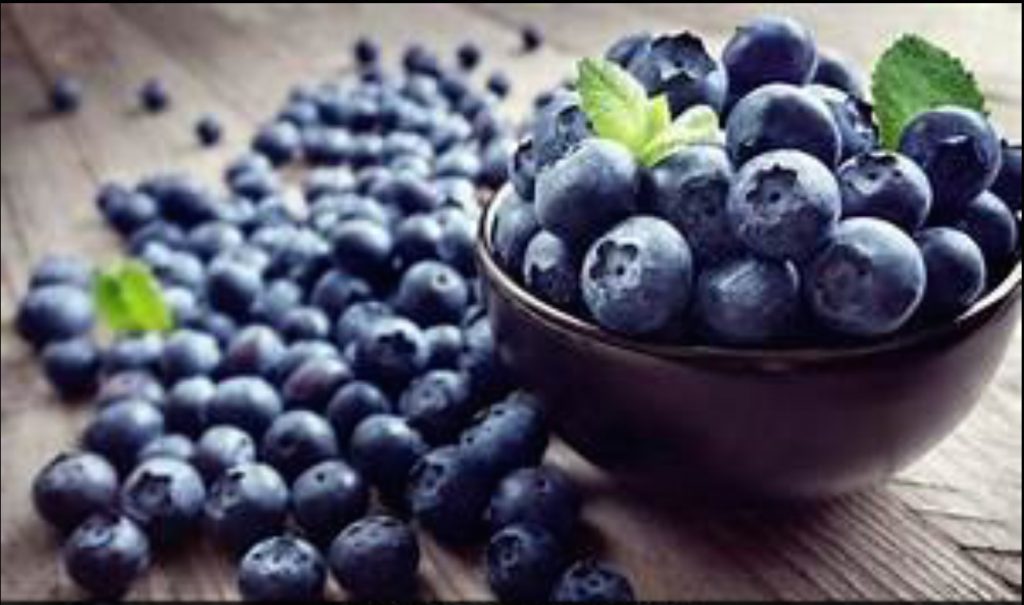
Oats with bananas and golden seeds are a typical breakfast for me. Oats in general with different toppings like blueberries, dried nuts, honey, or even strawberry jam would be my go-to in the mornings but sadly these go-to favorites can get a little tricky leaving me with a bitter aftertaste, nausea, or throwing up.
After my fifth Paclitaxel in early February, I had a loose stool incidence, lost a bit more weight, and eating became a tard more difficult. While talking with a close friend she suggested trying foods that I don’t normally eat so I took up the challenge.
While I wasn’t able to eat much at a time, these are some of the options I went for to try to put some fat back into my body. While the portions look really small, for someone without any appetite at all, they were the perfect portion for me and packed with flavour.
For breakfast, I went for the expensive select cut sausages (sausages are new for me) and fried eggs purchased from one of my favourite food stores M&S. Otherwise lunch included lots of fluids.
PS: I’m not a fan of processed foods and tend to stay away from anything processed. While these sausages are made with better meat, I’m still not a fan. Every bite was a stark reminder of that.
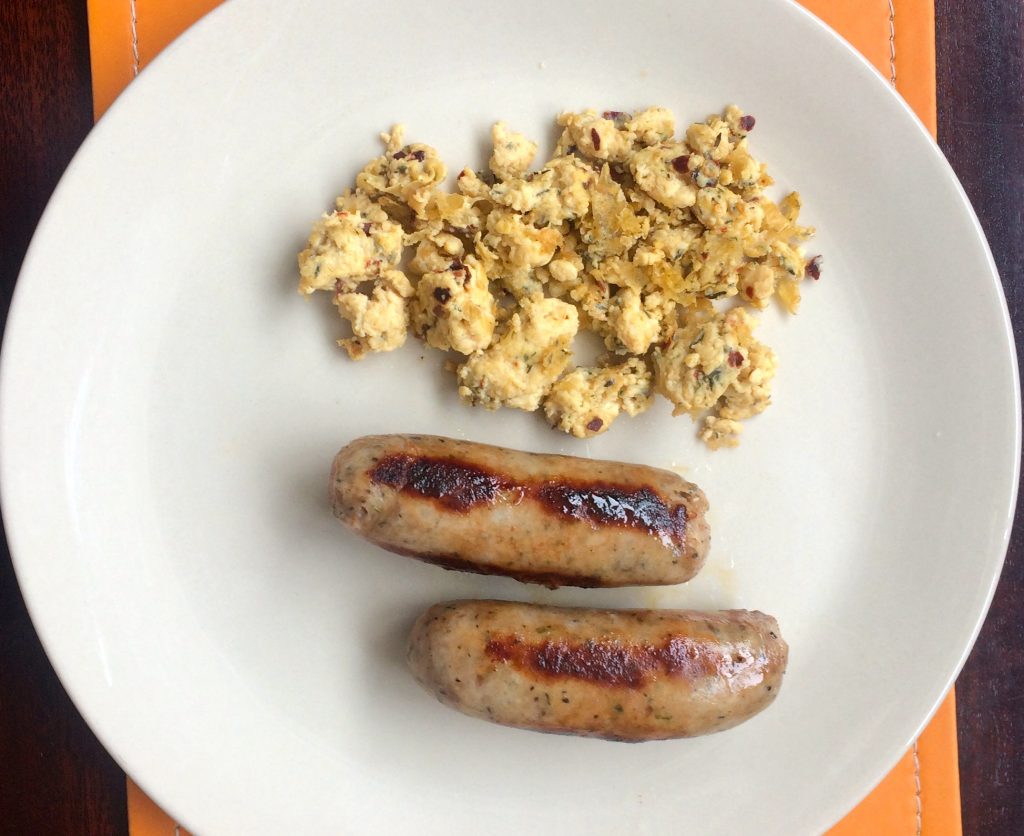
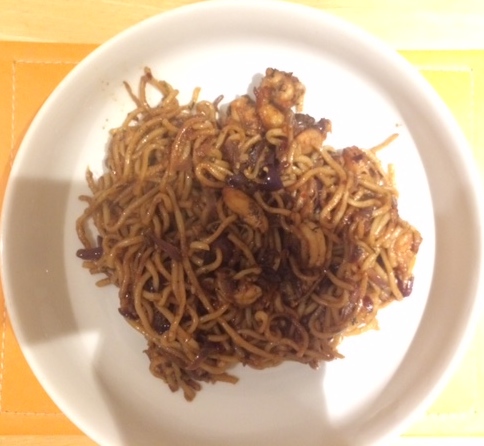
Dinner was a normal one but prepared slightly differently being more generous with the olive oil and Parmigiano cheese for extra flavour.
Then I went all African with some of my meals. Visited an African restaurant and bought a few of my favourites.
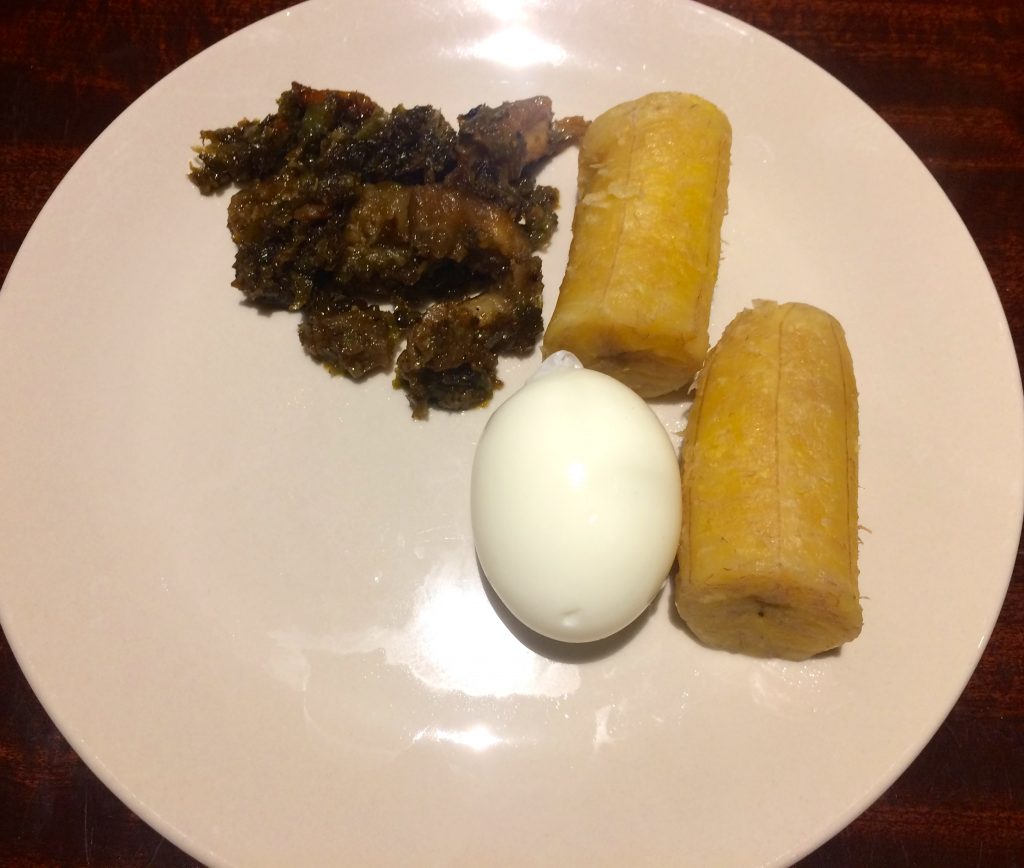
Ayamase stew also called Designer stew or Ofada sauce is a green bell peppers stew, which happens to be a delicacy common in the western part of Nigeria. This sauce with its unique bleached palm oil flavour, signature boiled eggs (optional) and assorted meats is one of the most favoured African stews.
PS: As much as I love Ayamashe, I find it contains a lot of palm oil as is the traditional way of making it so I always take what I want, recook it till almost all of the oil can be seen in the pan then strain it before dishing.
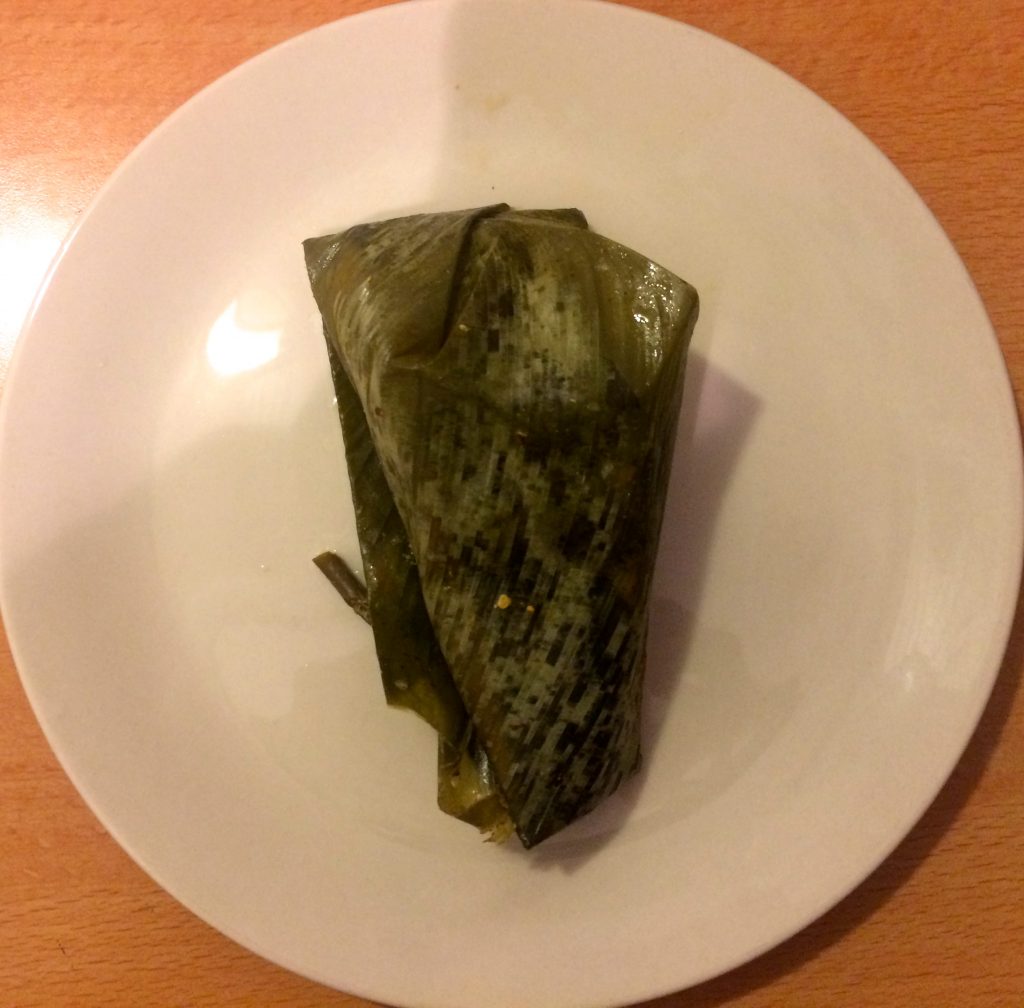
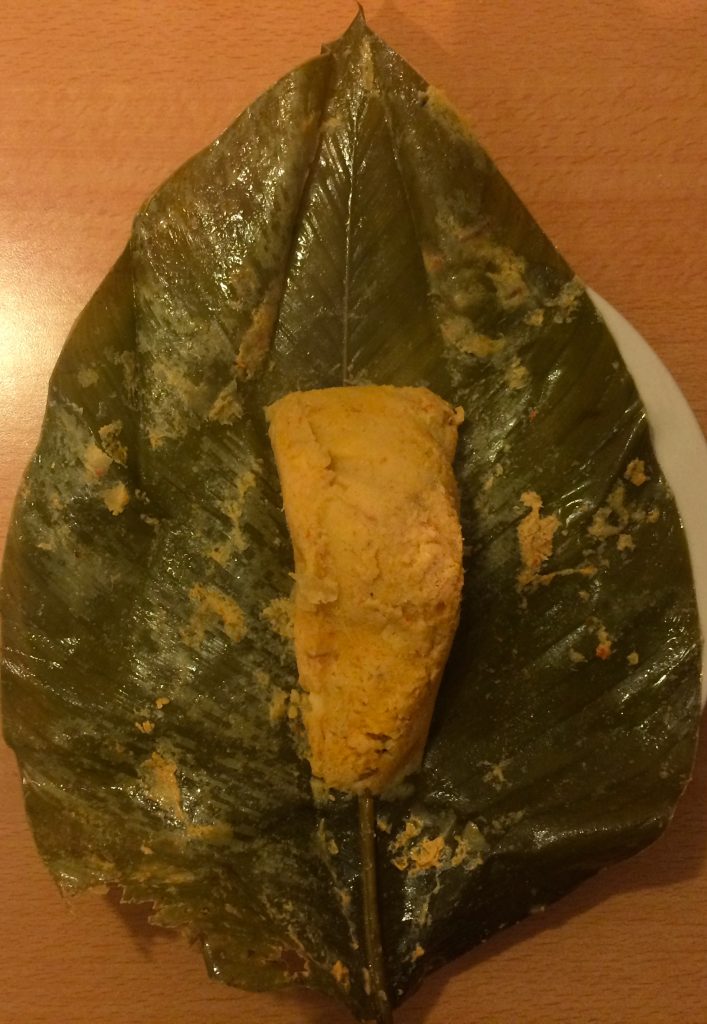
Moin-Moin or Moimoi is a Nigerian steamed bean pudding made from a mixture of washed, peeled black-eyed beans, onions and fresh ground red peppers (usually a combination of bell peppers and chilies or scotch bonnet) grounded together, seasoned then cooked inside ‘Ewe Eran’ (special green leaves). It is protein-rich and a staple in Nigeria.
I’ve always known that Moimoi is cooked inside the Ewe Eran (green leaves) but discovered it can also be cooked in foil and some plastics.
PS: Just a note that I only EVER eat Moimoi cooked in the leaves.
While I ate this moimoi on its own, I would under normal circumstances have enjoyed this lovely favourite with Ayamashe stew, fresh fish, grilled chicken, meat or our Nigerian jollof rice (rice spiced and stewed in a flavourful tomato broth).
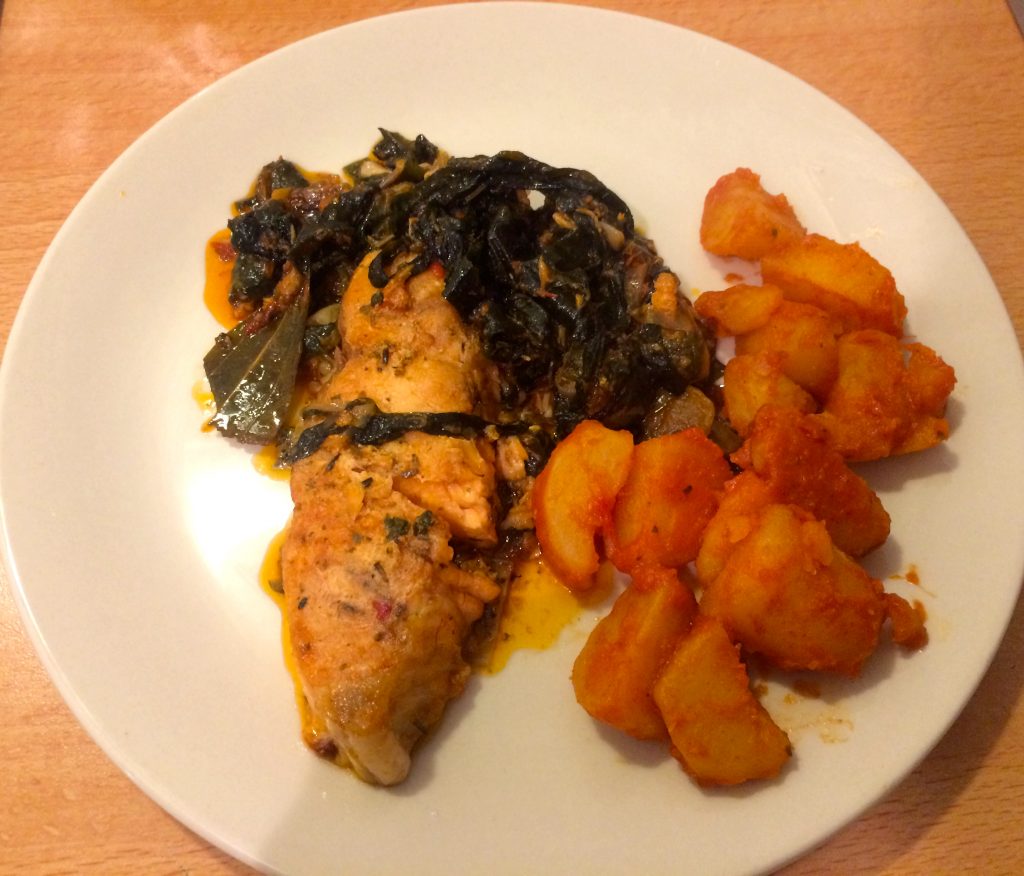
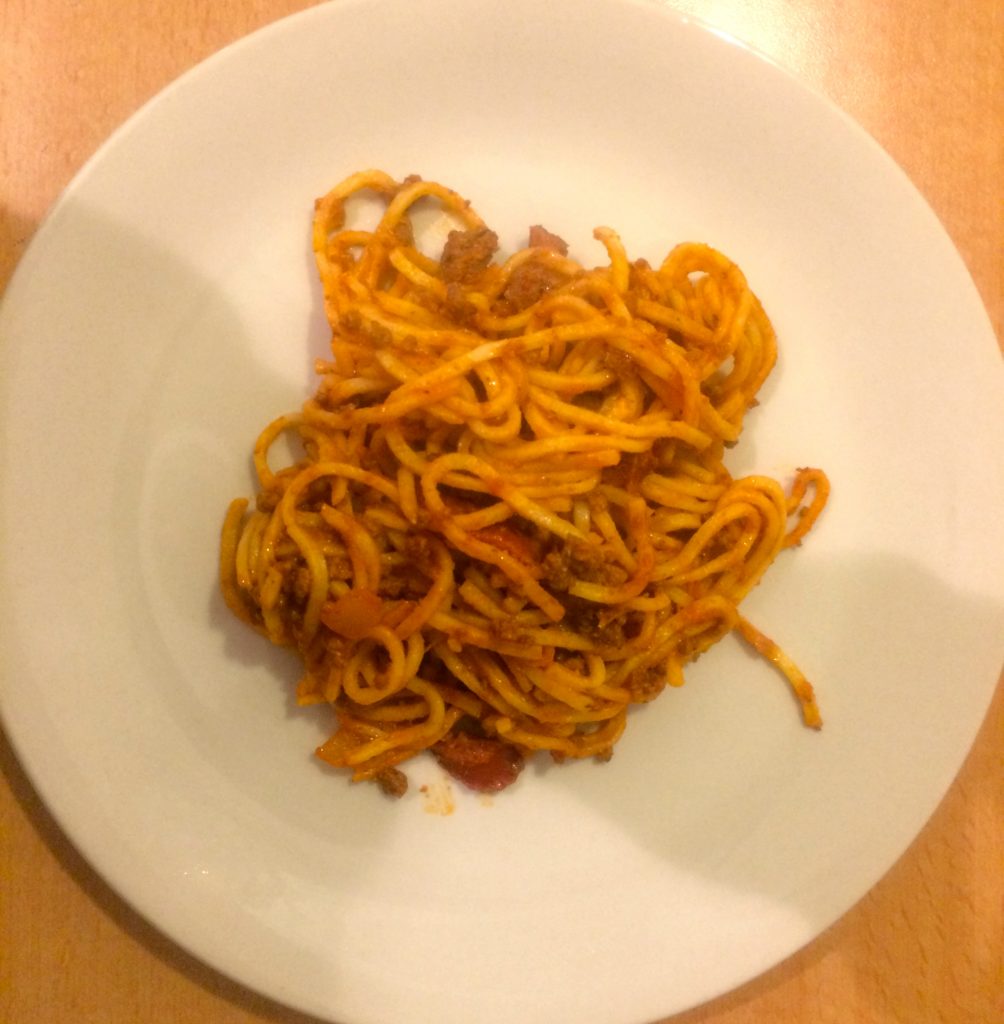
Five days on and my appetite is slowly returning with me now feeling a little hungry before mealtimes. Still eating very little at a time but eating I am. I try to make my evening meal a little more special too.
Sadly just as things start to improve slightly with eating, I take another hit and the process starts from the beginning again so eating nutritious food is a constant work in progress.
PS: Since I started my treatment, I haven’t had the urge for anything sweet so there have been no deserts in my meal plans.
Since I had the loose stool incident, I haven’t been able to eat in the afternoons but I’m determined to change that because I want to give my body a good fighting chance of a better recovery after each hit.
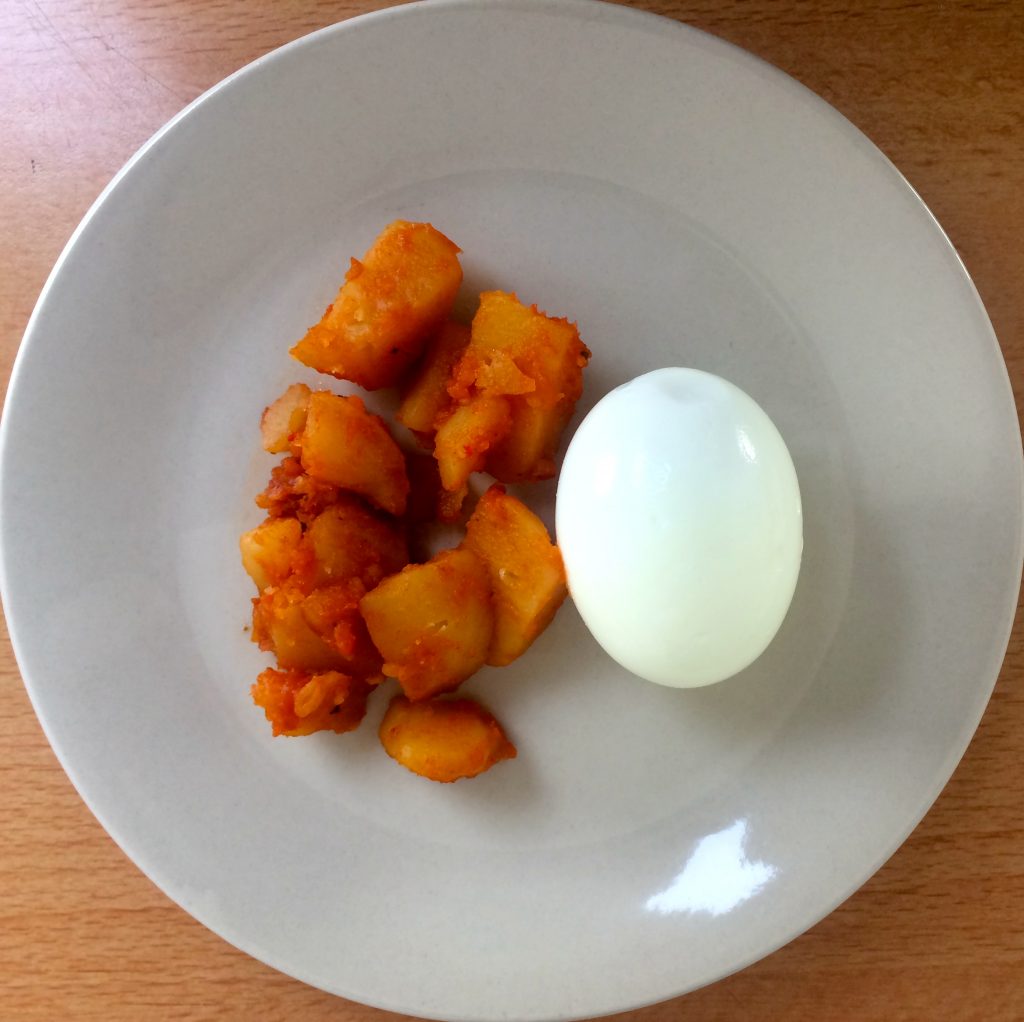
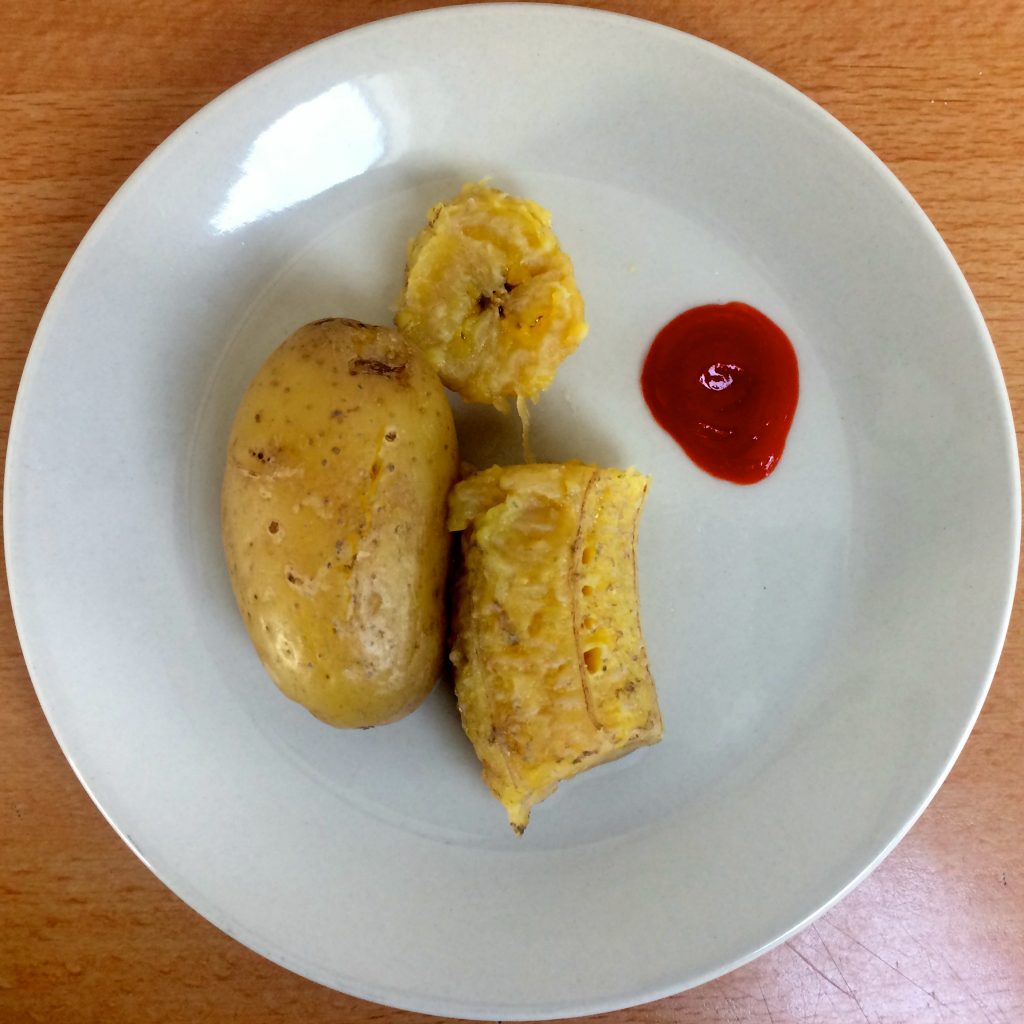
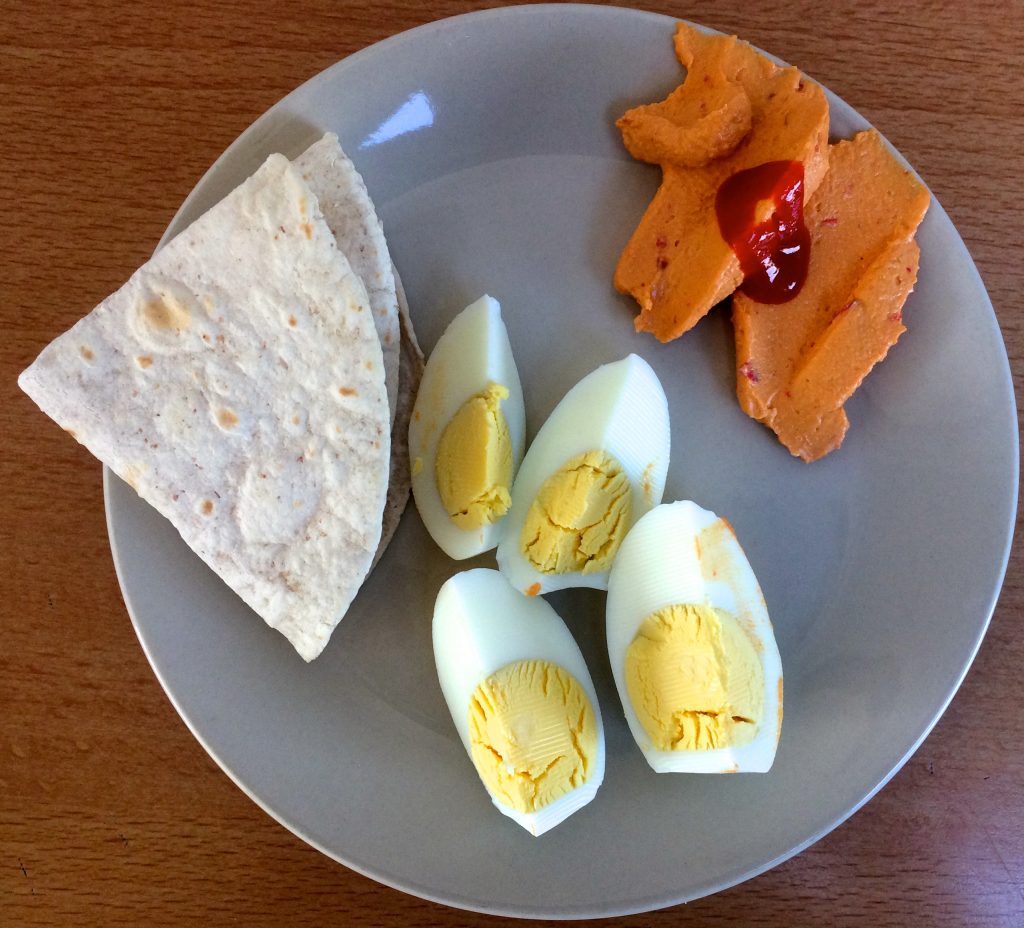
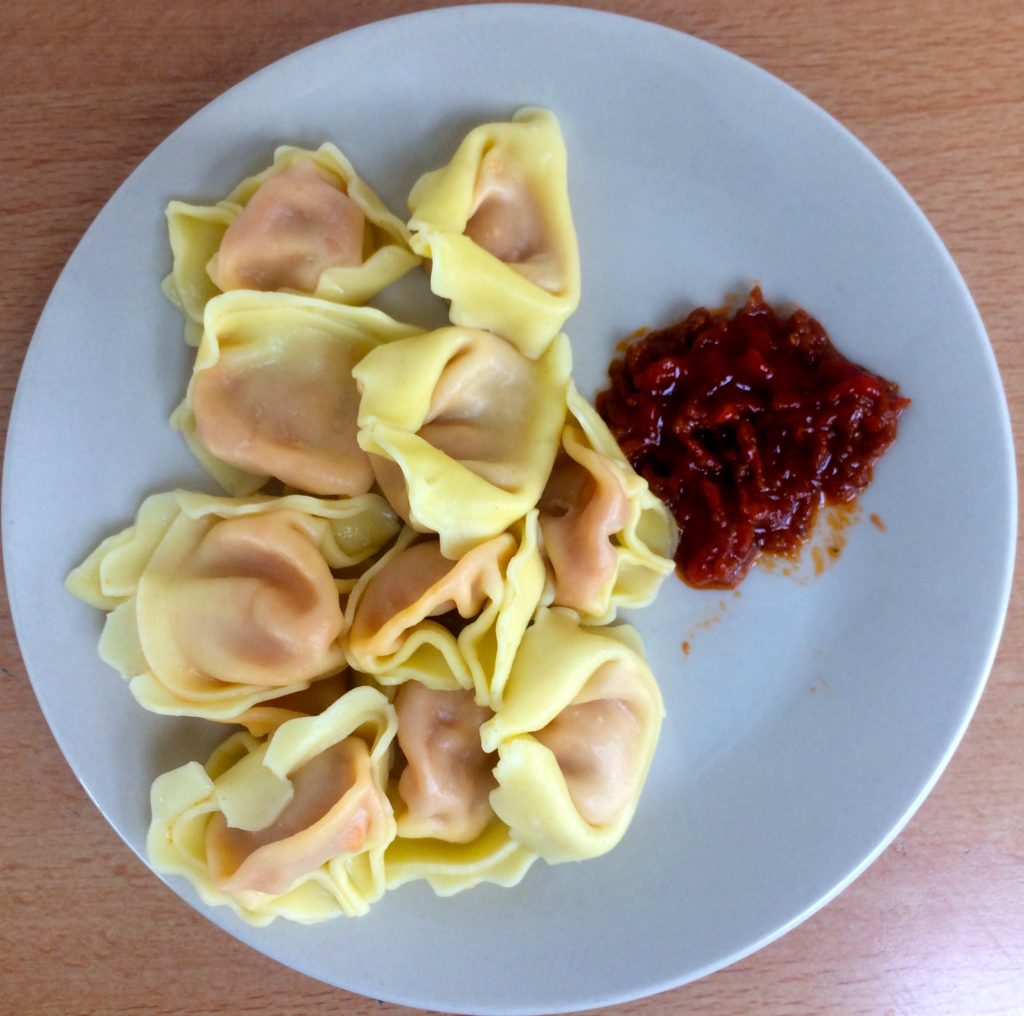
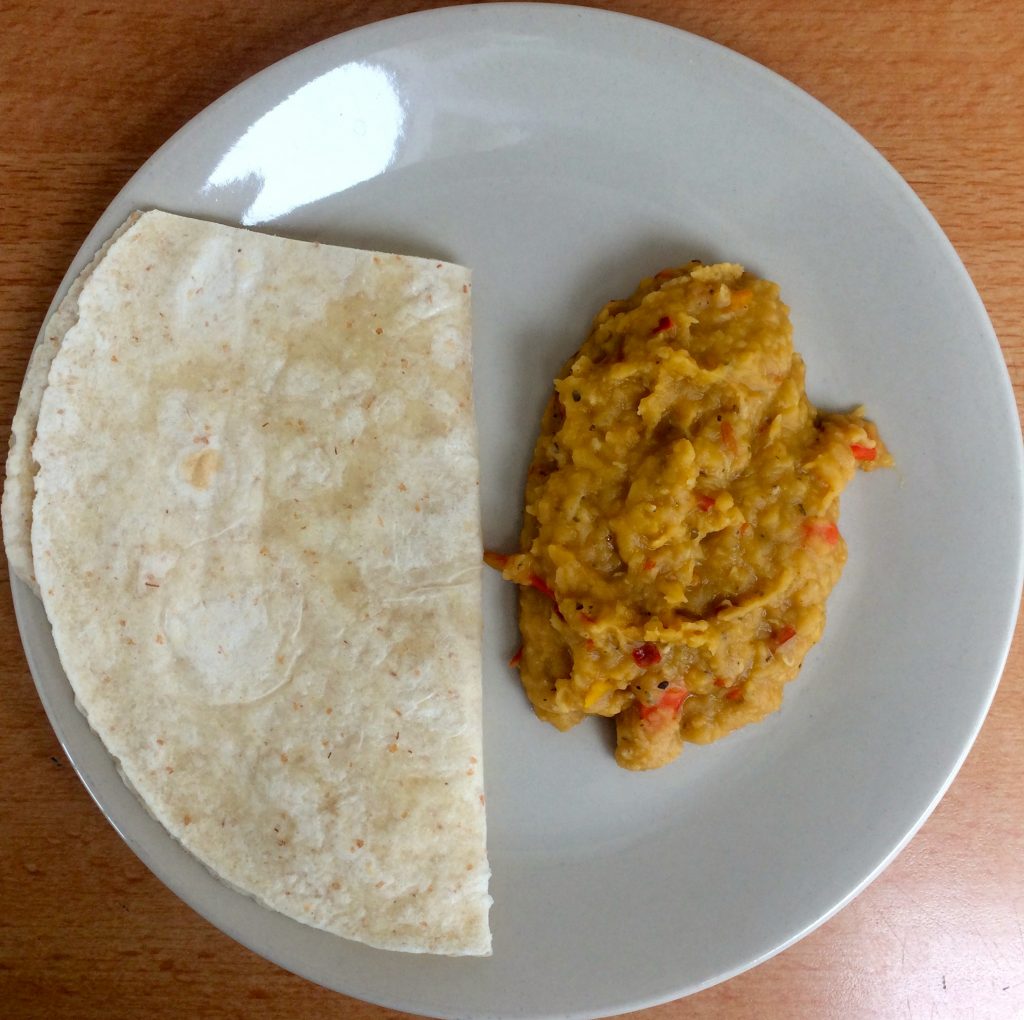
I know these are really small portions but for a person having chemotherapy, dealing with various side effects with no appetite at all, it’s better to eat something small than to have nothing at all.
It’s the end of February 2021 and eating is still very difficult but I’m trying and often eat with eyes closed as sometimes these small meals just tasted so bad.
If you are currently having chemotherapy and are reading this, please eat something – that is my advice to you. Your body will thank you for it, even if it tastes like gravel.
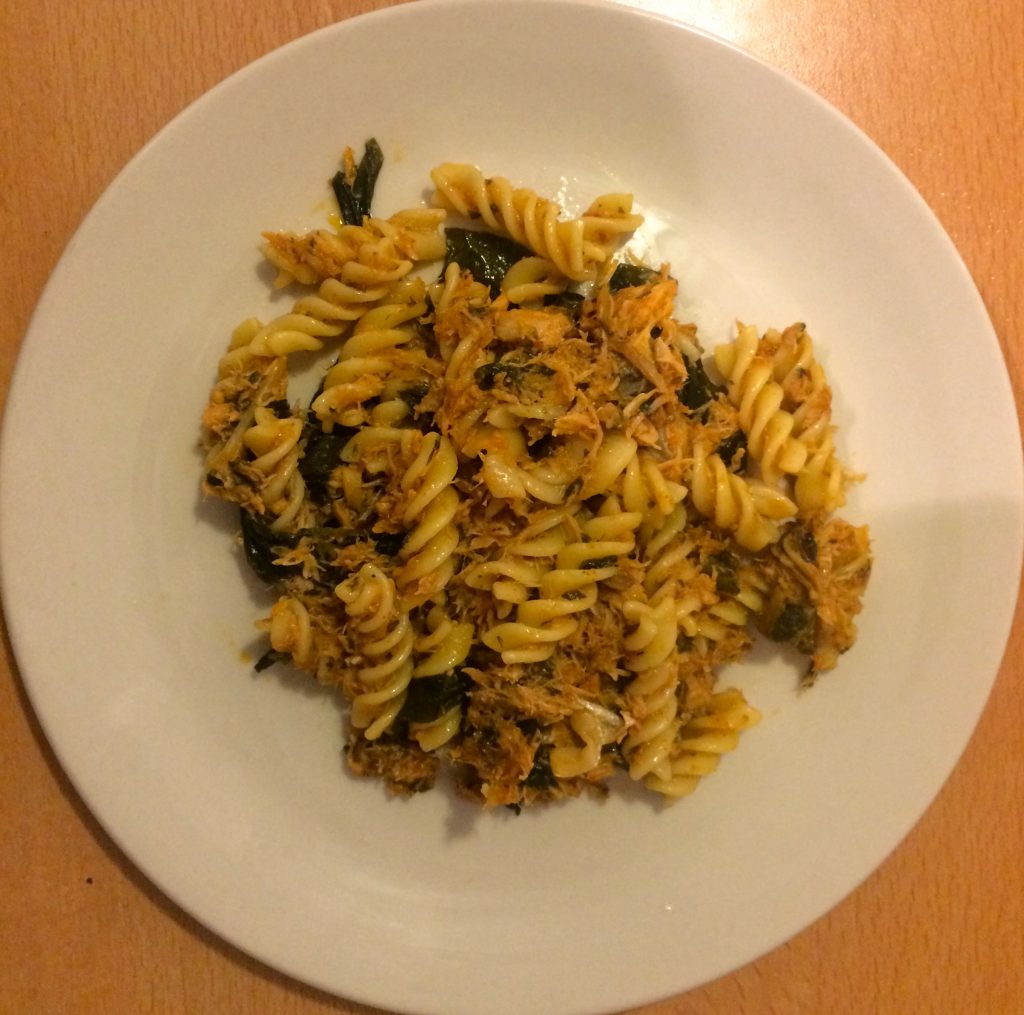
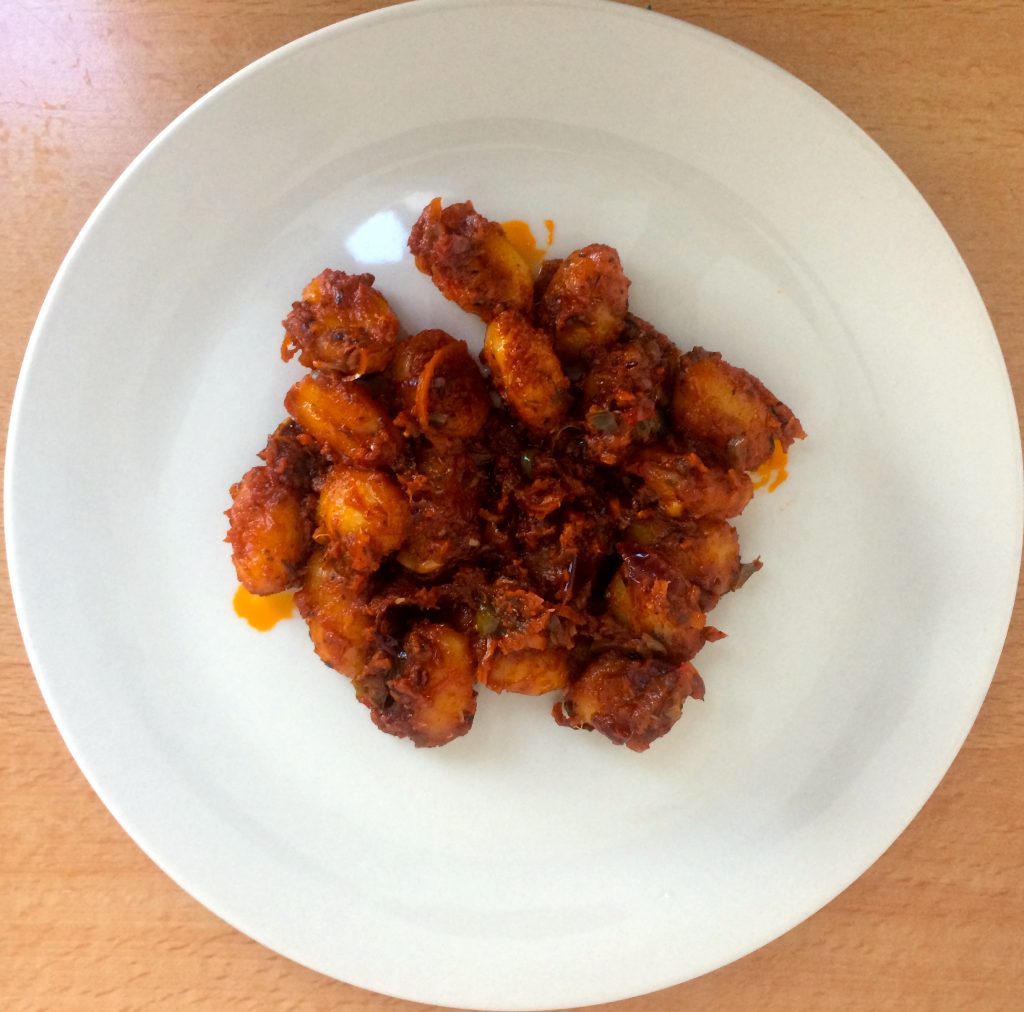
These are some of my evening meals after cycle seven on the 17th of February. I don’t get hungry most times so I try to ensure that what I’m eating has some sustenance. Again these are small portions that I know will sustain my body after receiving such a big hit of chemo.
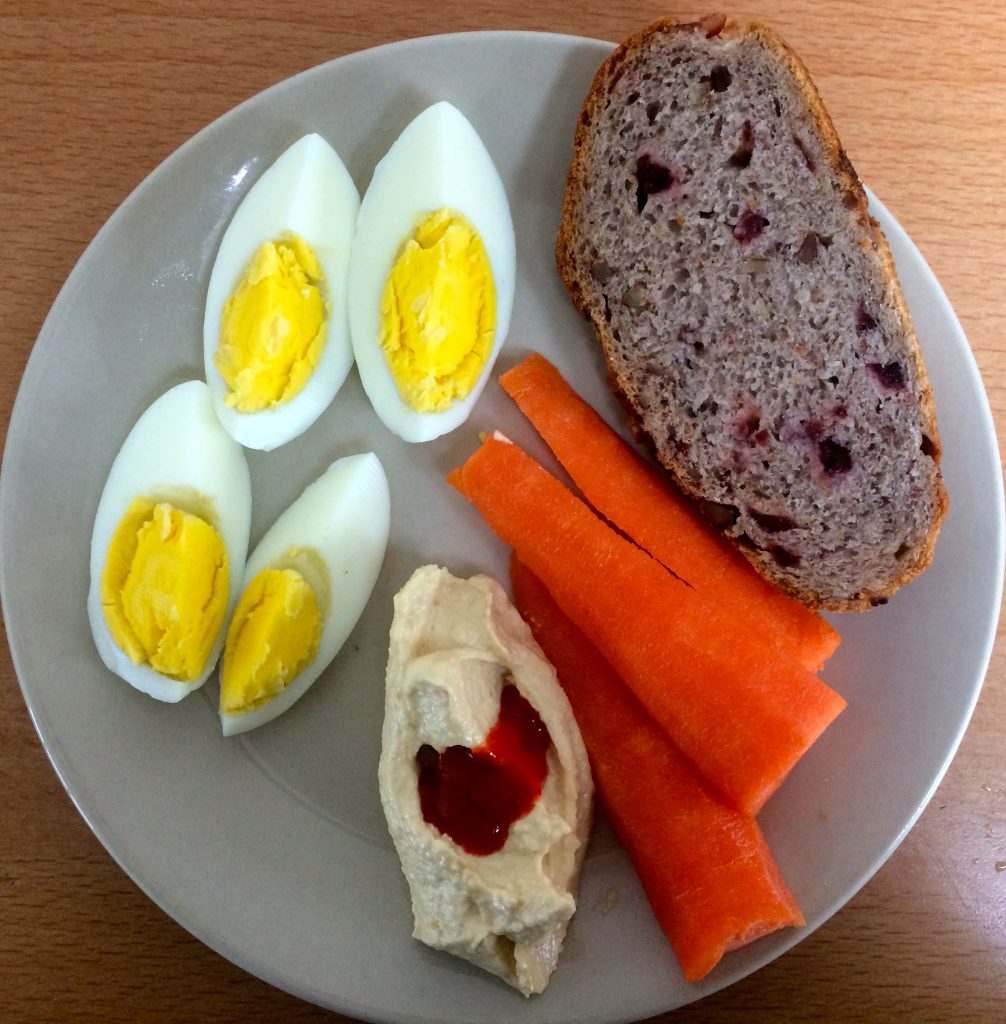
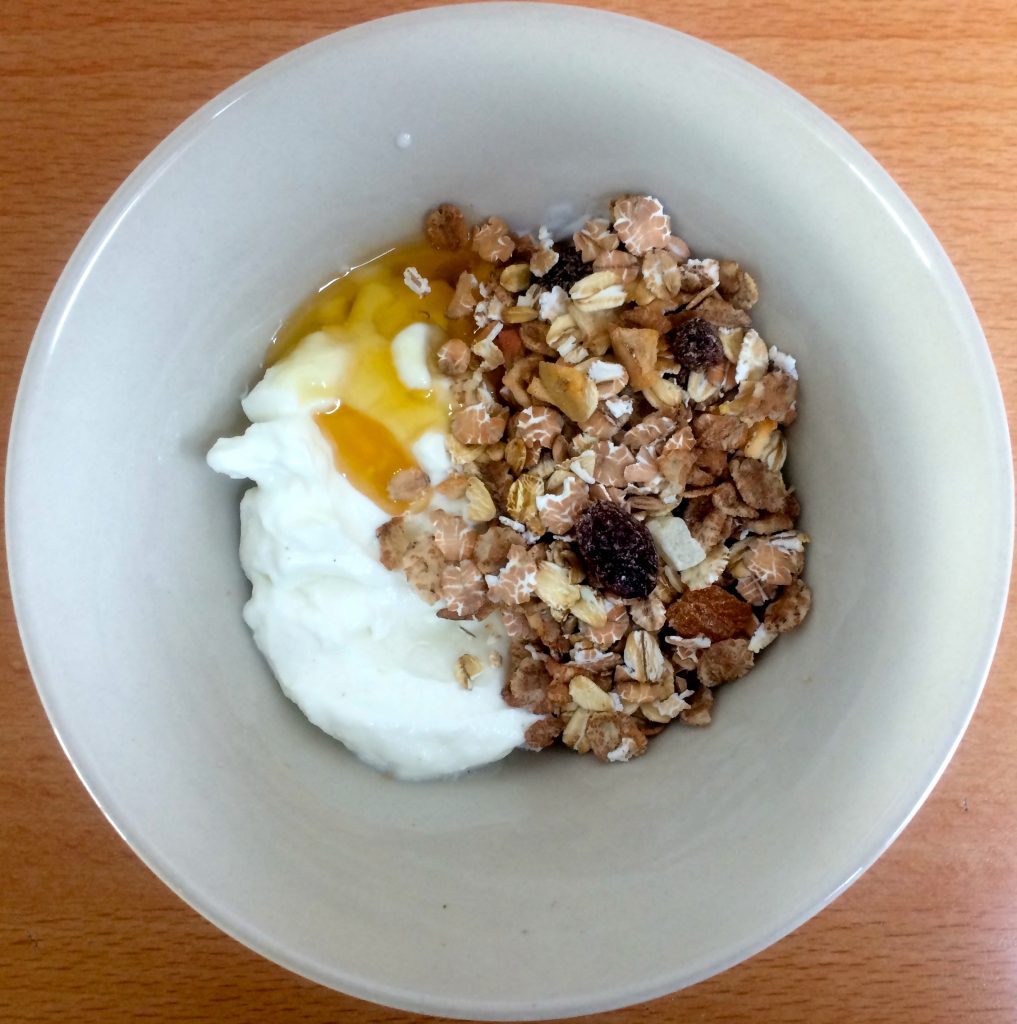
By the time I’d had my eight Paclitaxel on the 24th of February, I realised I could go an entire day without feeling hungry so I decided it was time to put even more of an effort into my daily food consumption and ensuring I ate three small meals daily hungry or not.
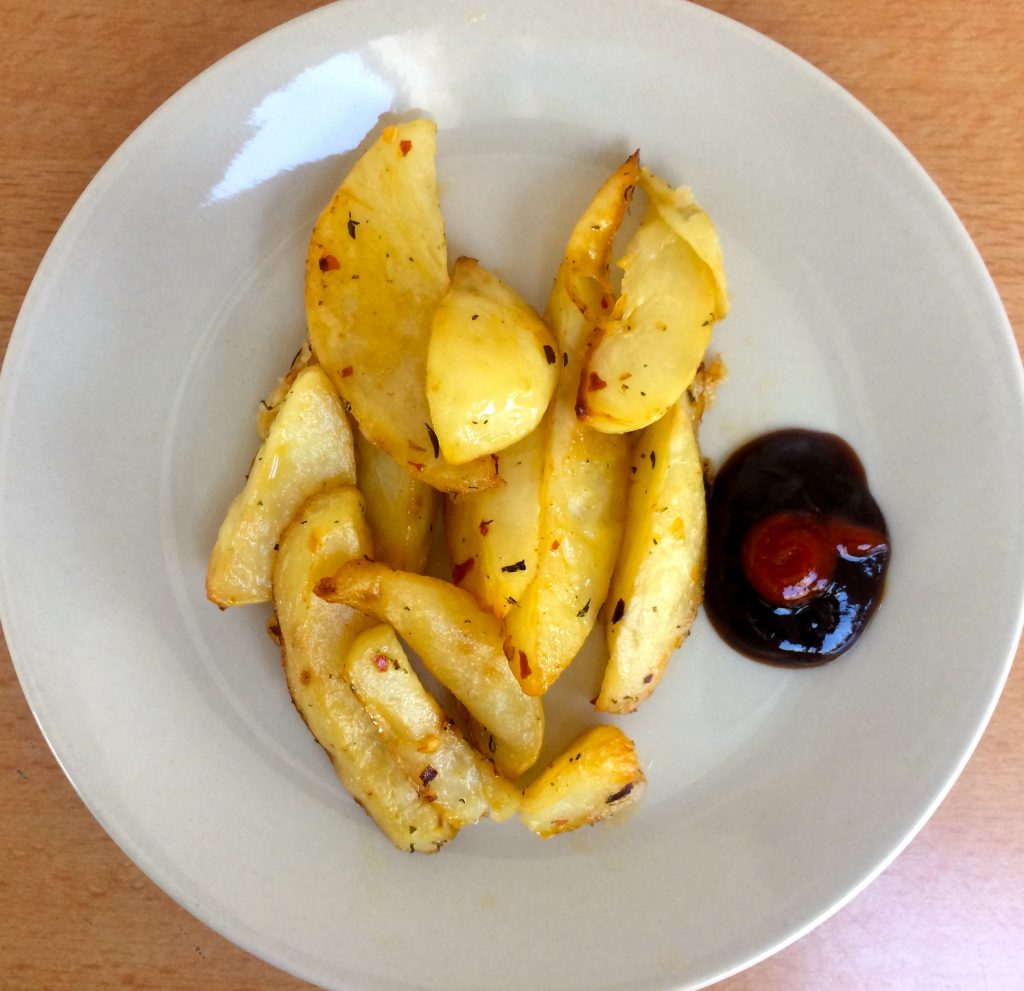
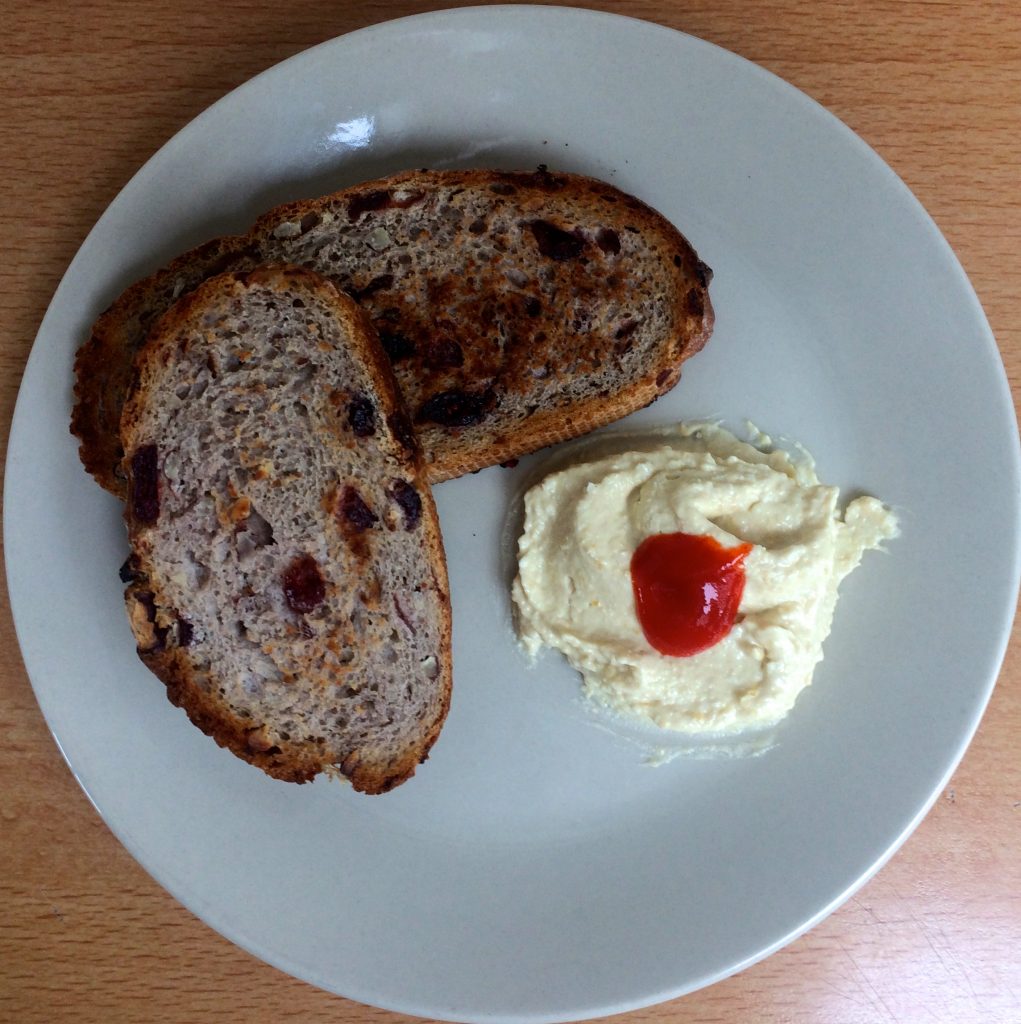
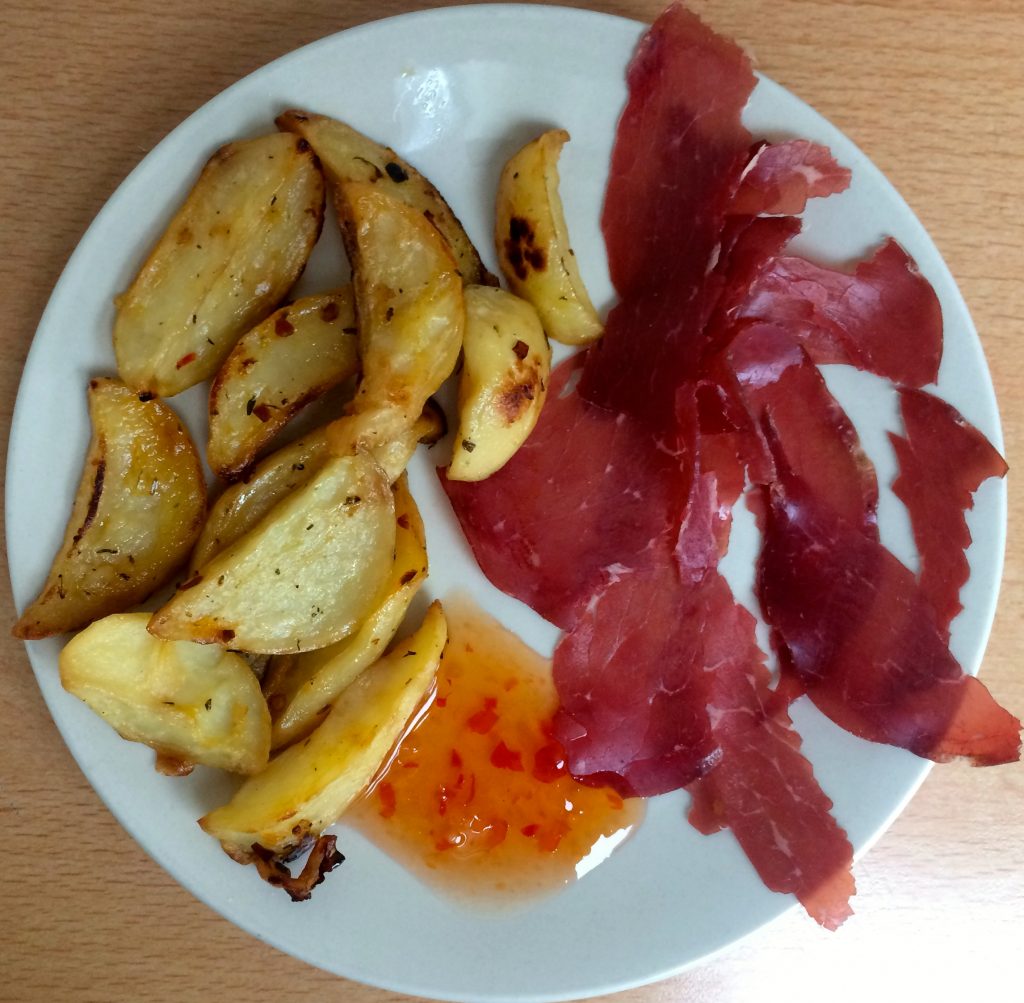
Lunchtimes are the hardest times to eat so I try to make lunchtime meals a little exciting. Bearing in mind most vegetables and fruits now leave me with a bitter after taste, nausea, or throwing up so I’m going purely for what tastes ok that will still supply some nutrients.
I had the ninth and last infusion of Paclitaxel chemotherapy on the 3rd March 2021. While I am still not able to eat much or even taste much of anything, I have carried on with the forced eating during meal times and have kept trying different foods just to help my body with the regeneration process, as the skin on my entire body has become extremely thirsty and flakey.
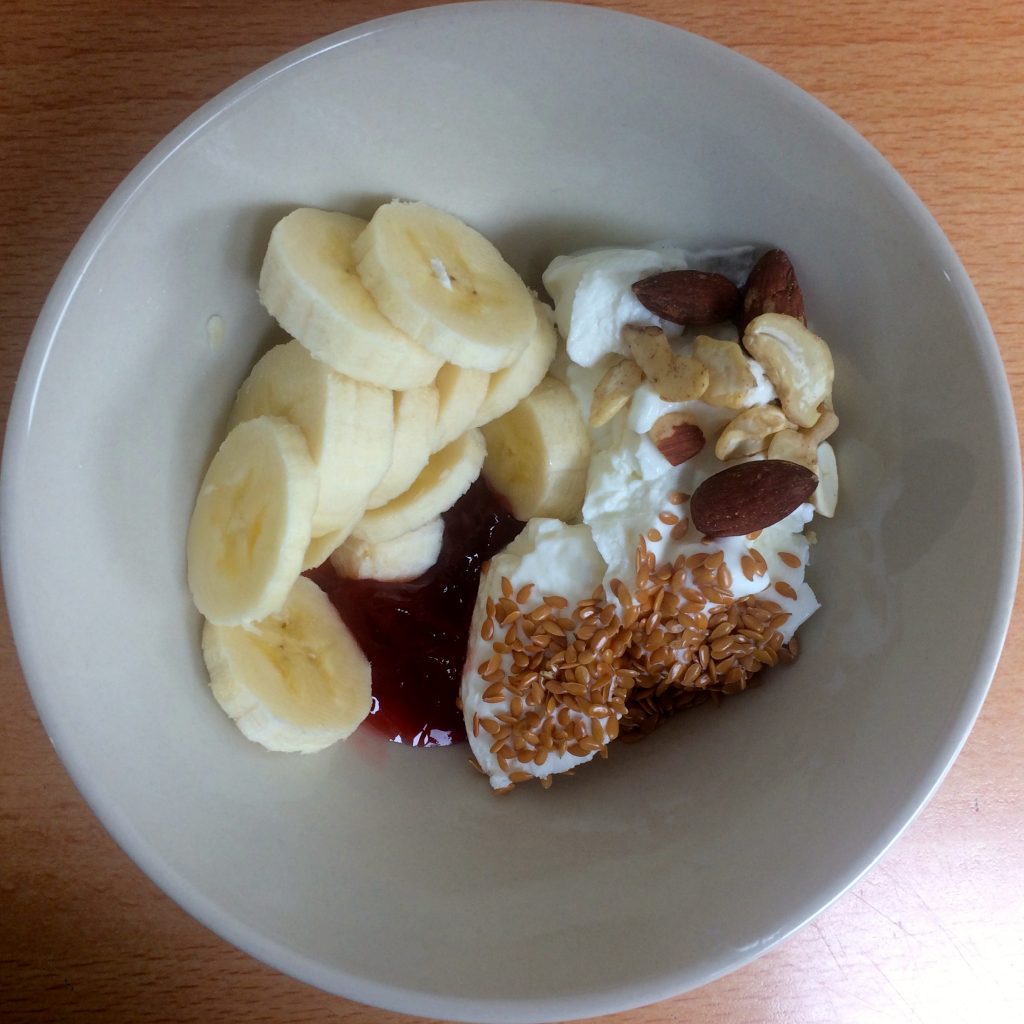
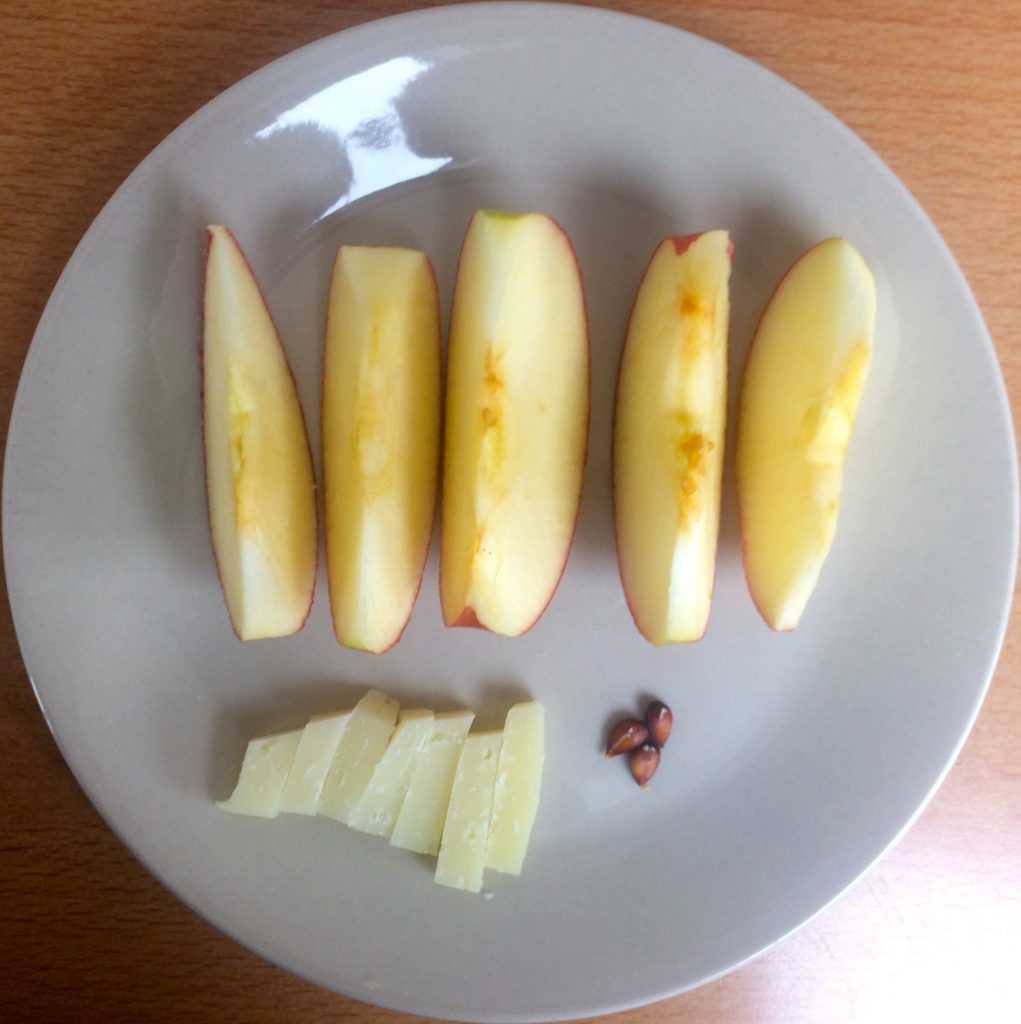
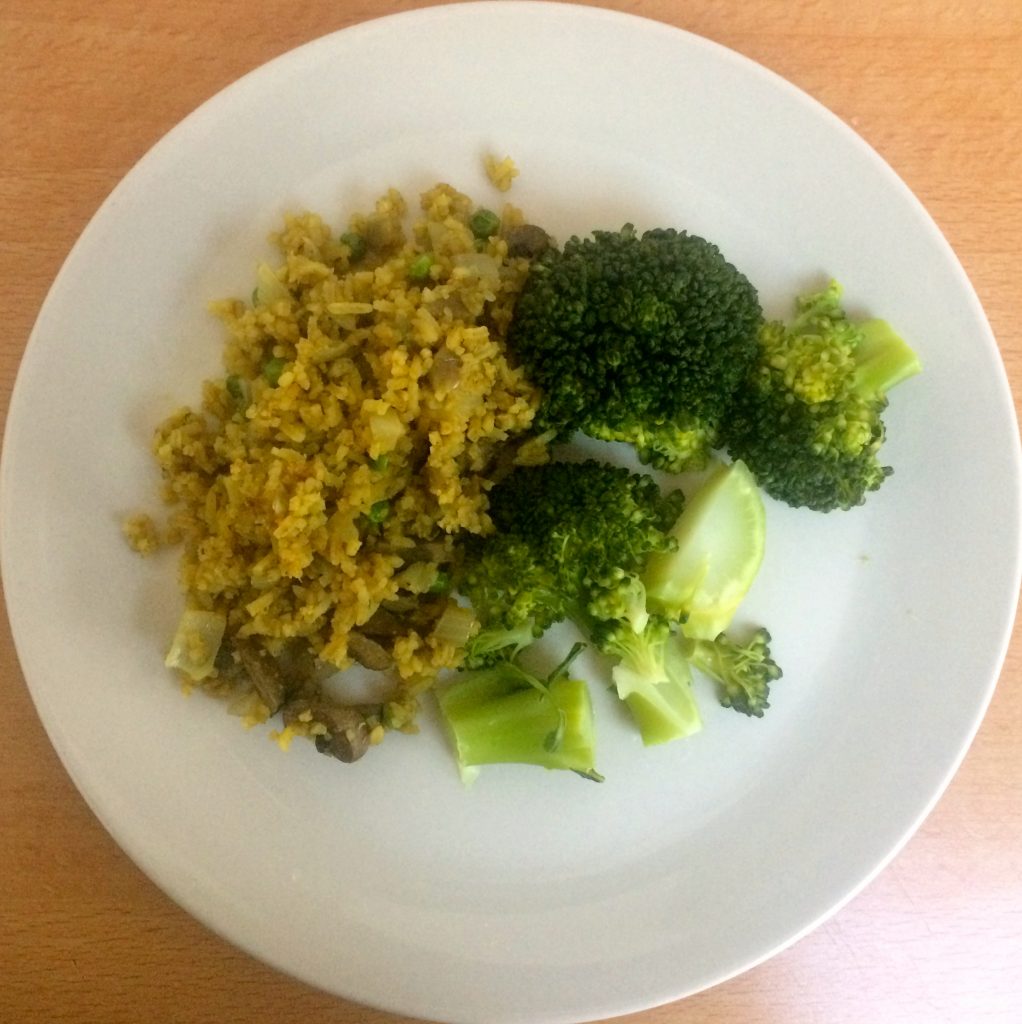
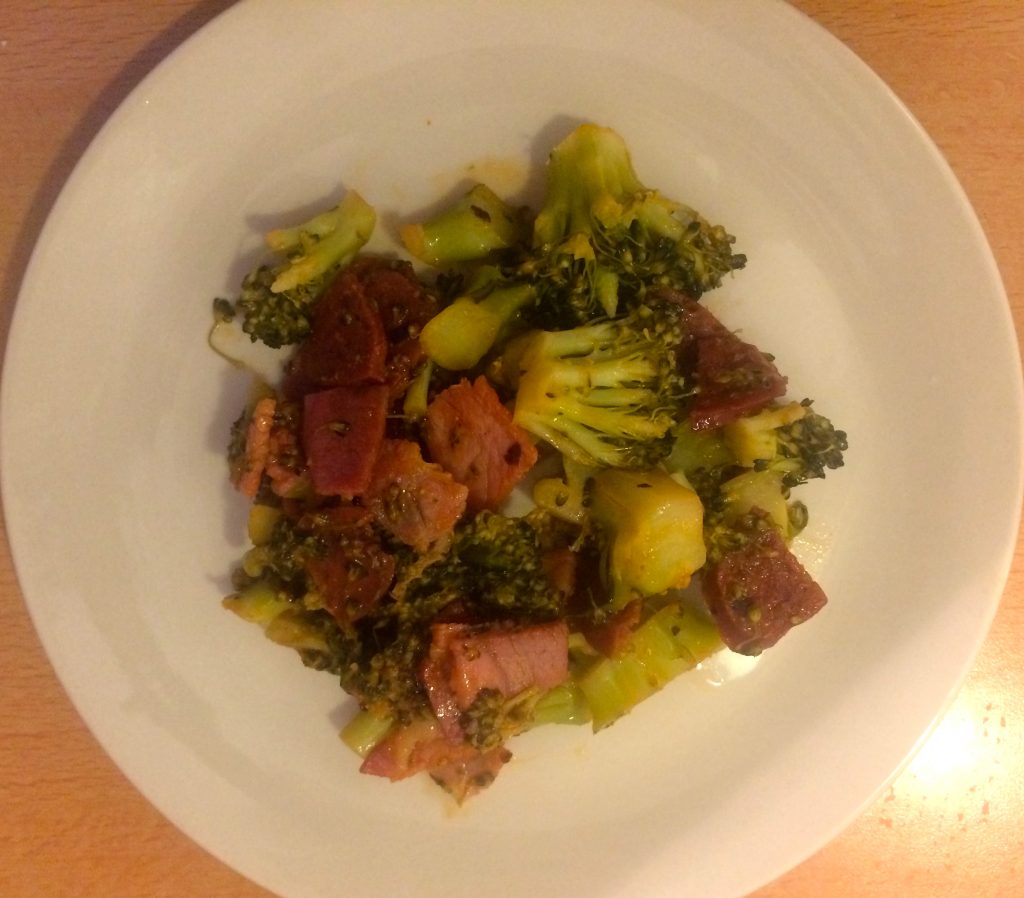
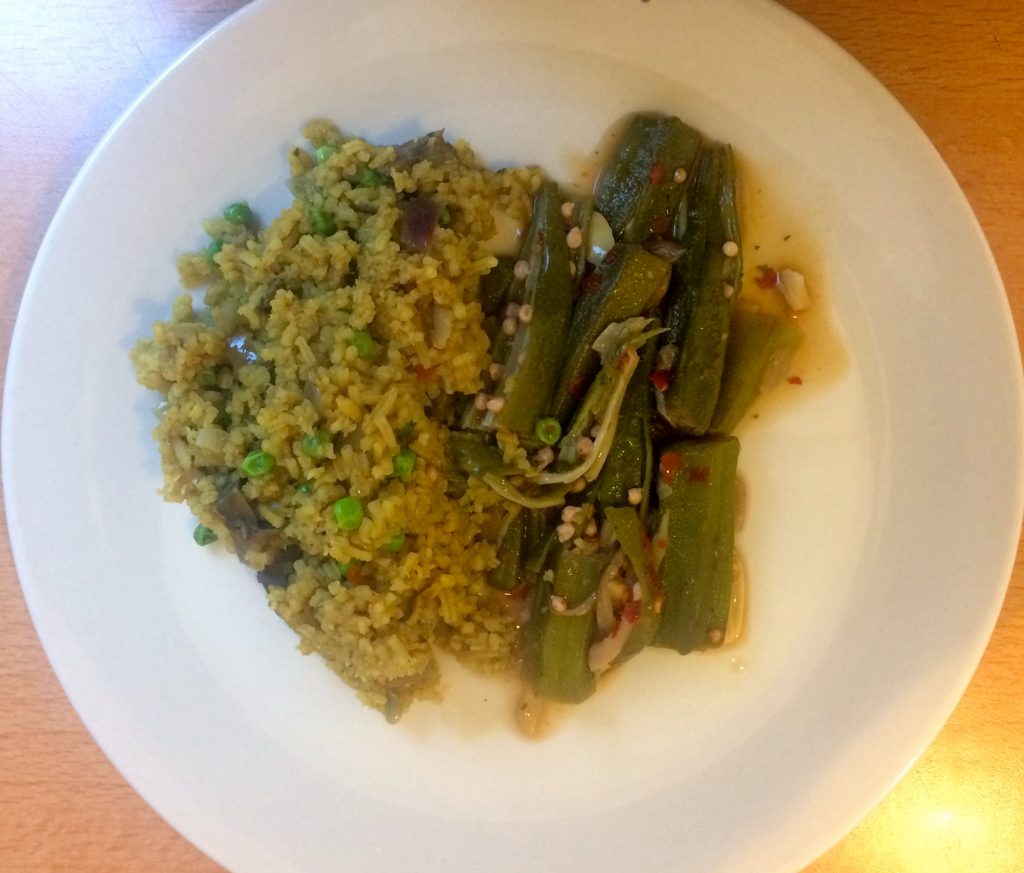
It’s Tuesday 23rd March 2021 and almost three weeks since my last Paclitaxel chemotherapy infusion. I can confirm some fruits, nuts, and vegetables are back on my eating menu. They don’t taste of much but at least I’m not running into the bathroom to throw up.
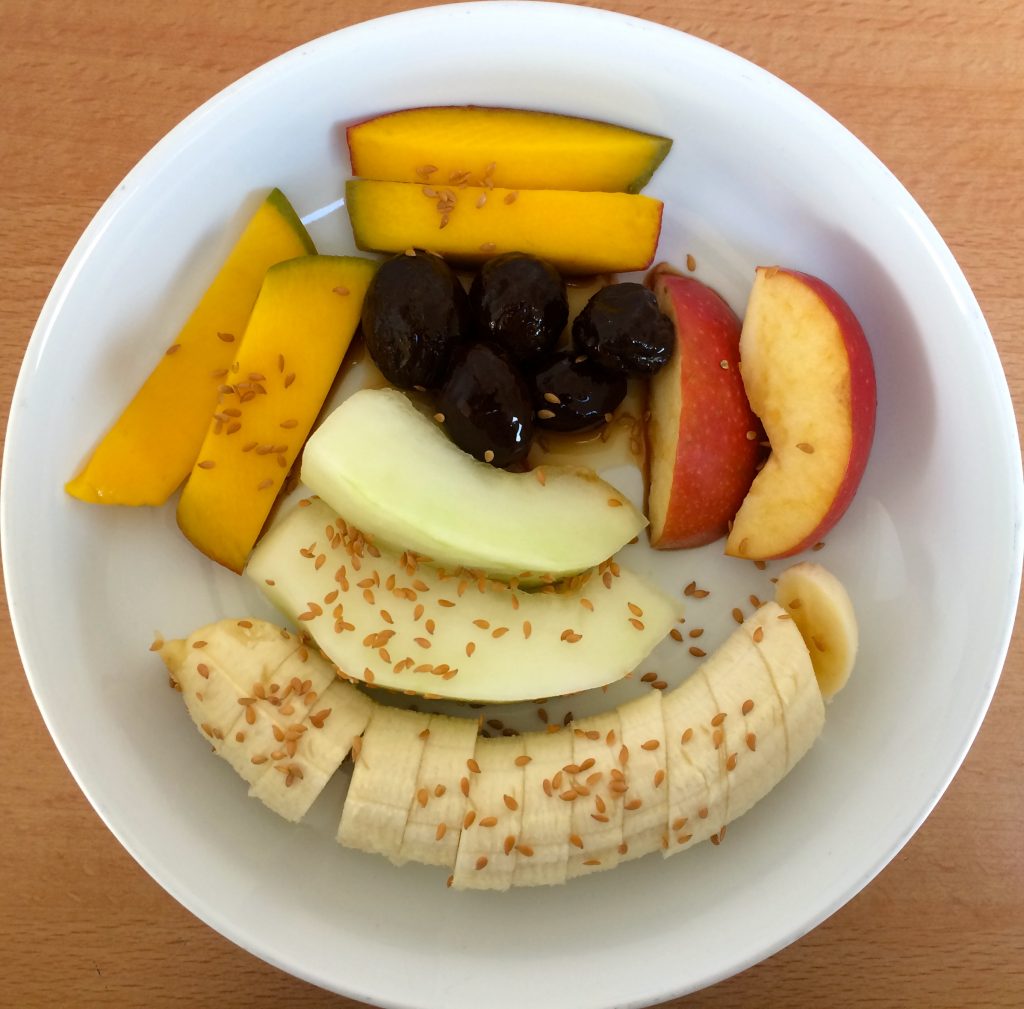
It’s now four weeks and two days since my last Paclitaxel chemotherapy and I’m beginning to crave some fruits and this is my first mixed fruit salad in a very l-o-n-g time. While the fruits tasted off, the smell is just perfect and after eating everything in this bowl there was no nausea or throwing up.
- 1. My Most Recent Scare
- 2. Chemo Prep The Second Time
- 3. Chemotherapy The Second Time Begins…
- 4. Chemo Side Effect The Second Time
- 5. What I’m Currently Eating
- 6. Port-a-Cath My Saving Grace
- 7. My Lockdown Support Team
- 8. ENT Surgery & Prep
- 9. Chemotherapy The Third Time Begins…
- 10. Chemo Side-Effects & Changes, The Third Time.
- 11. Journey Towards A New Recovery
